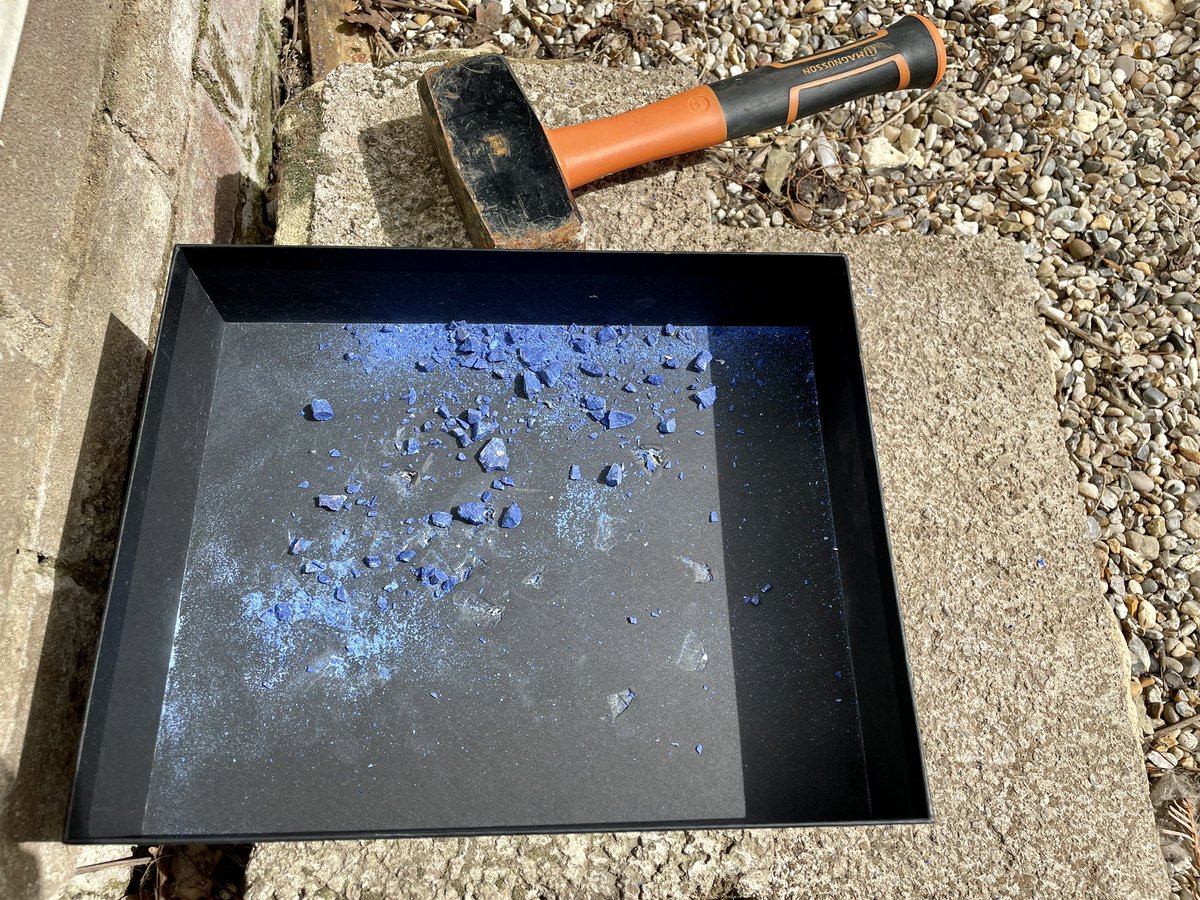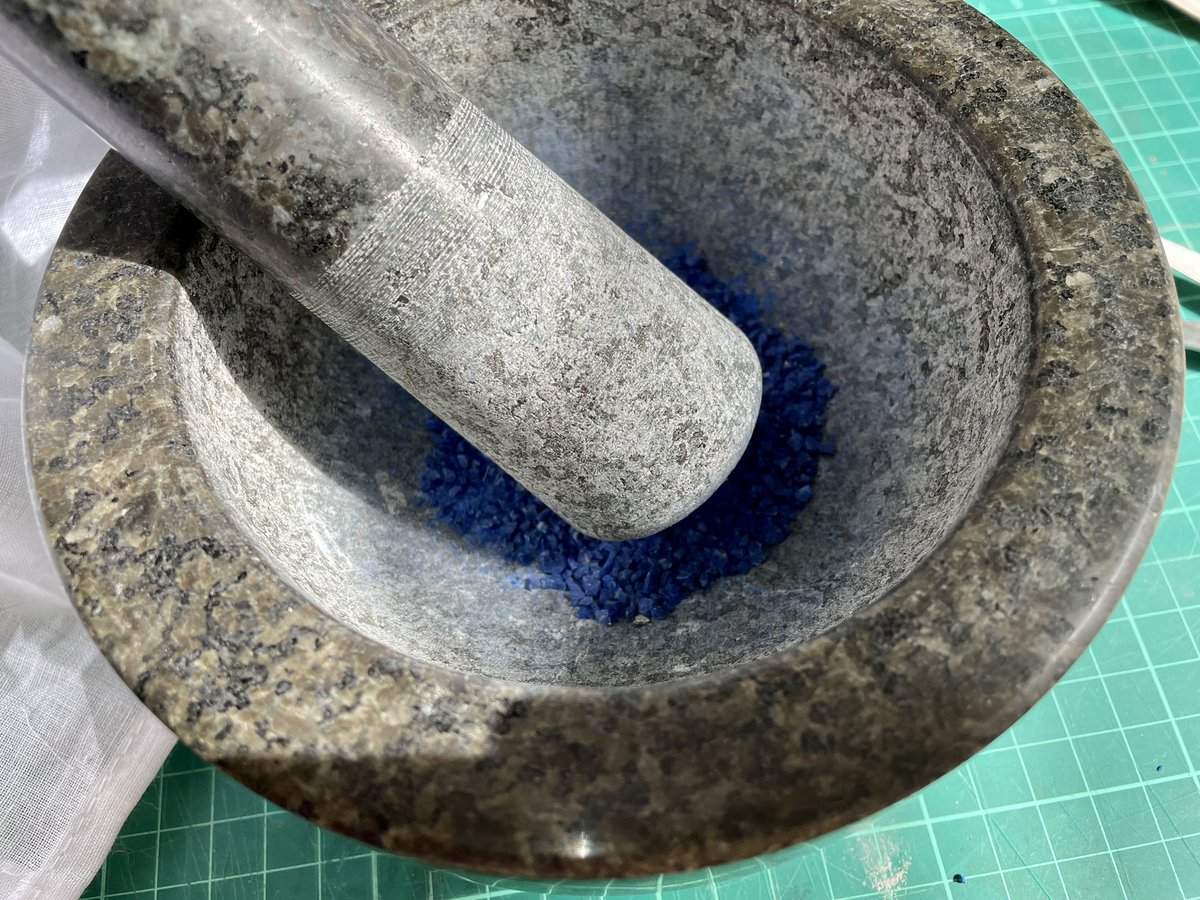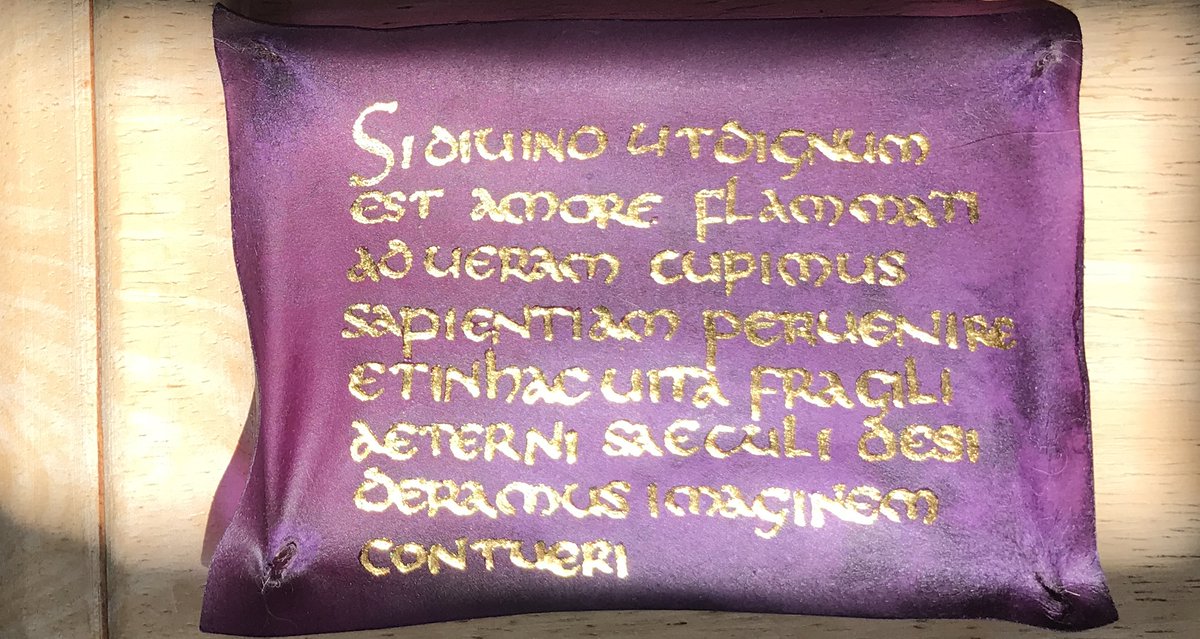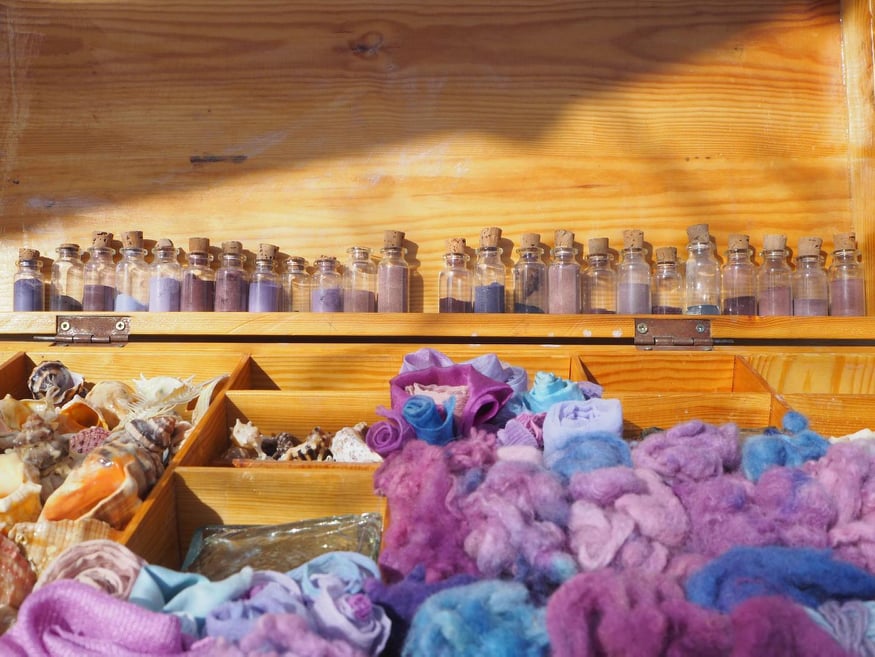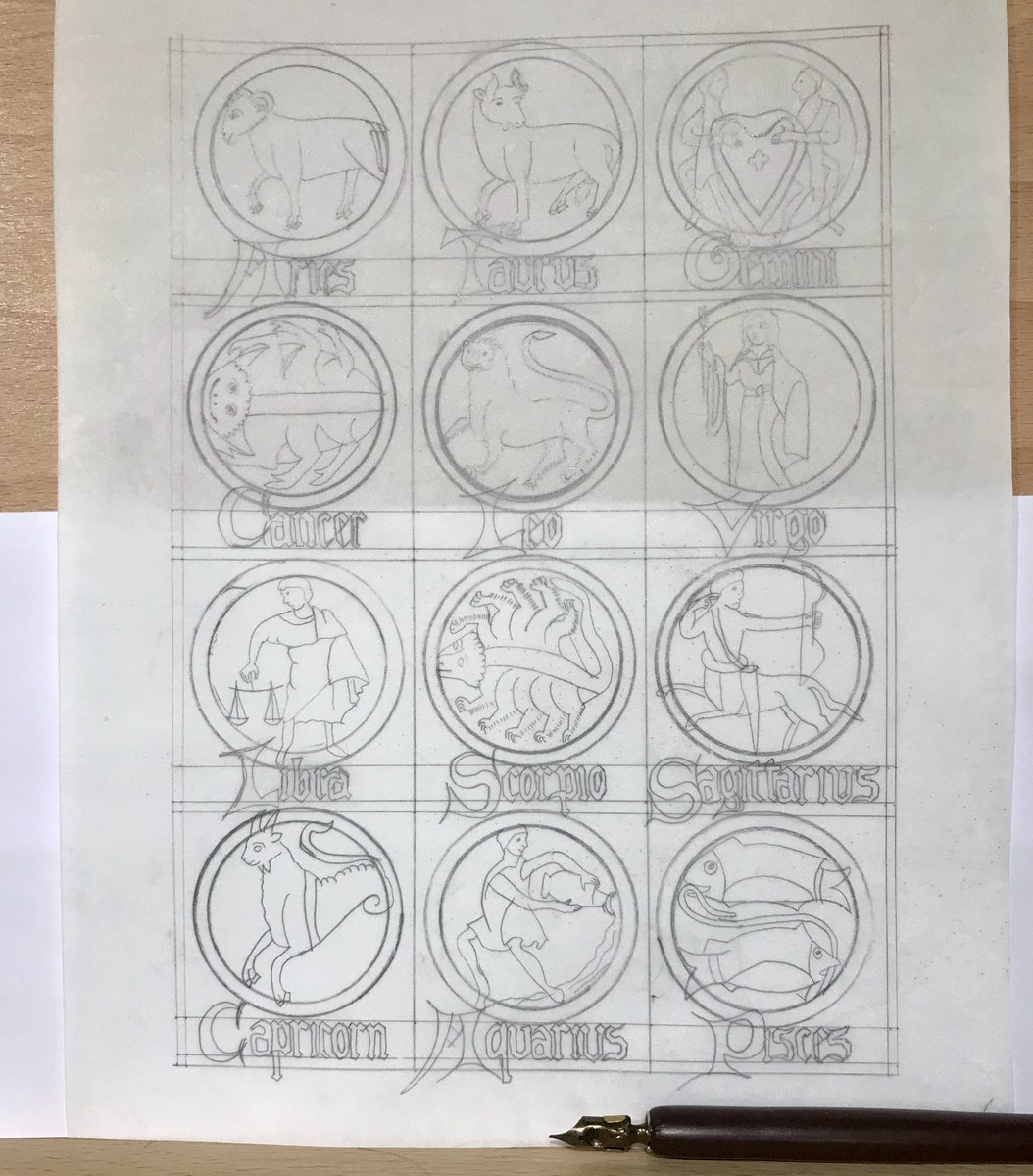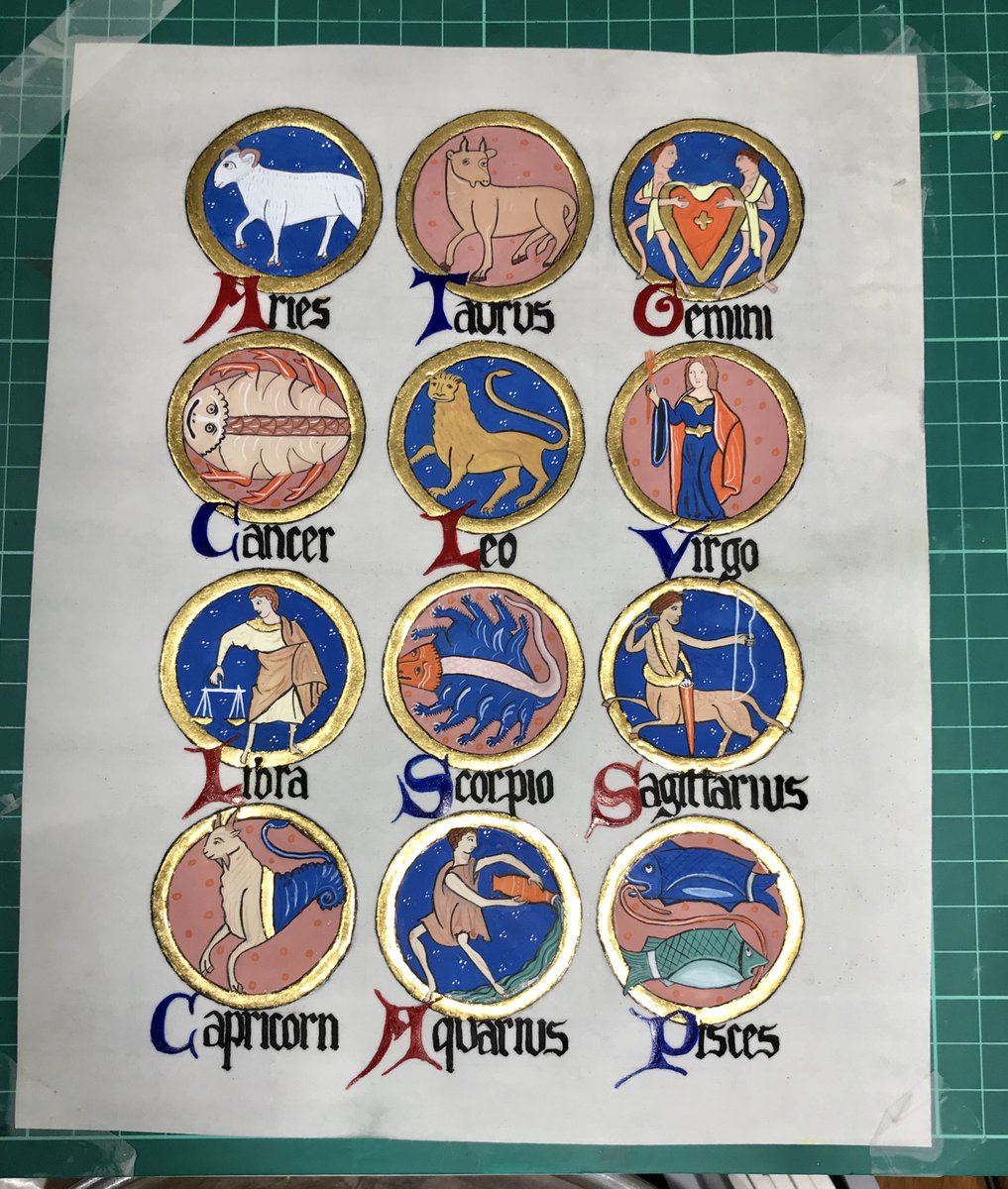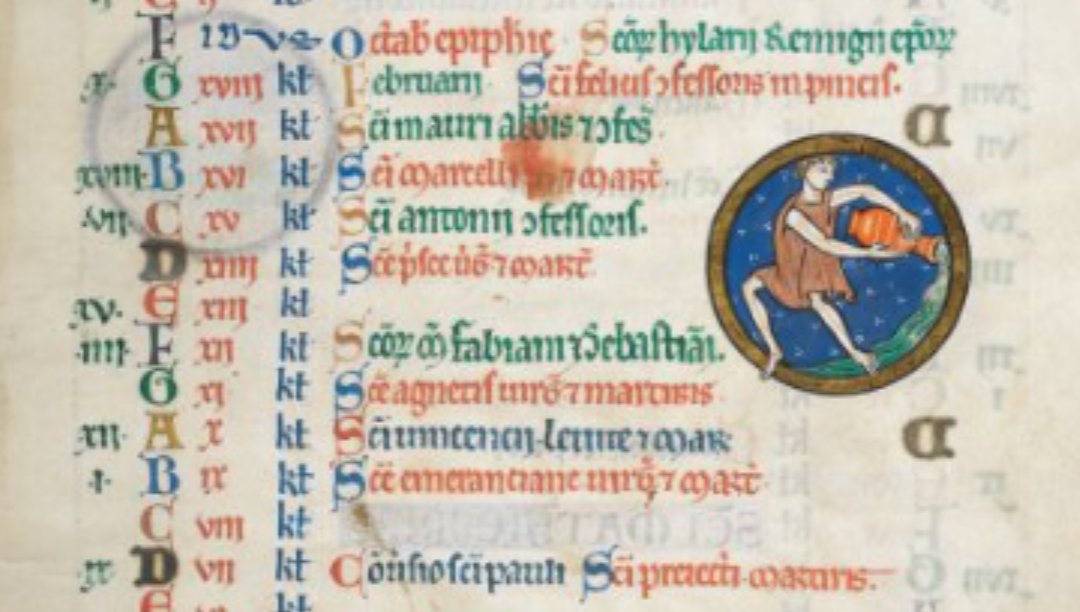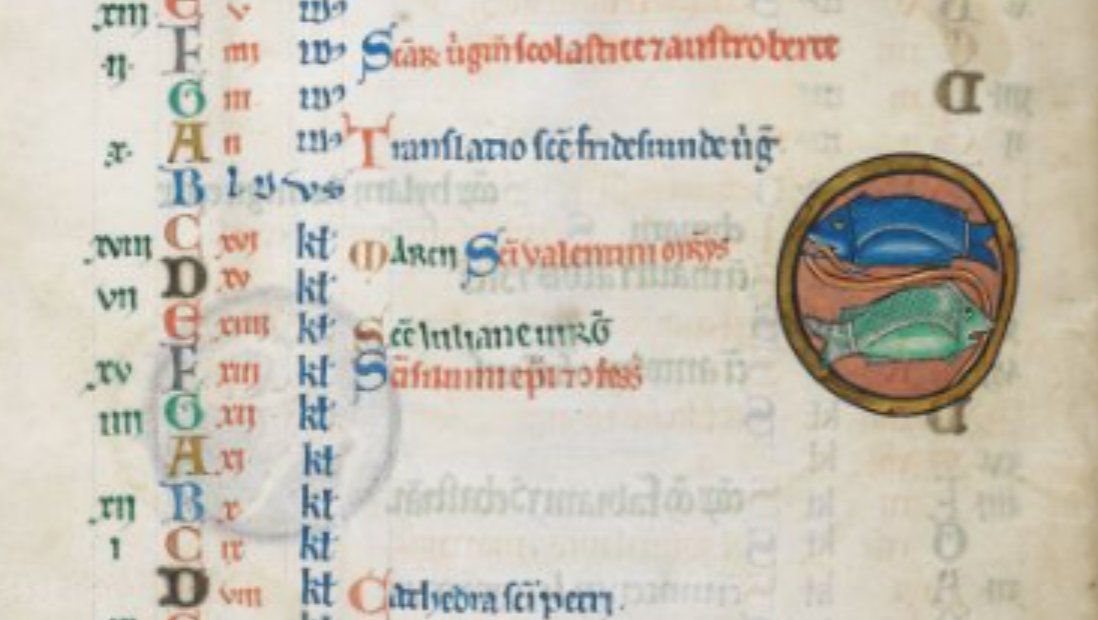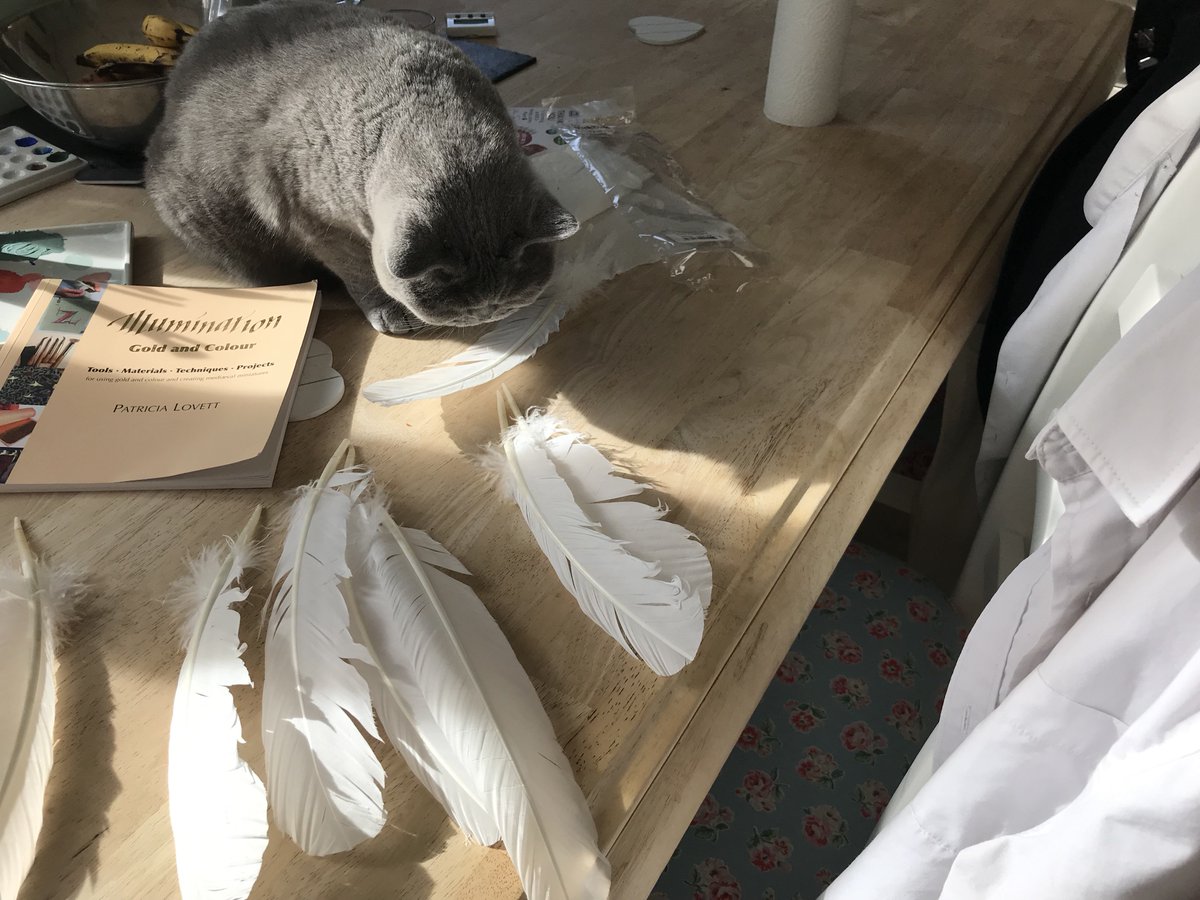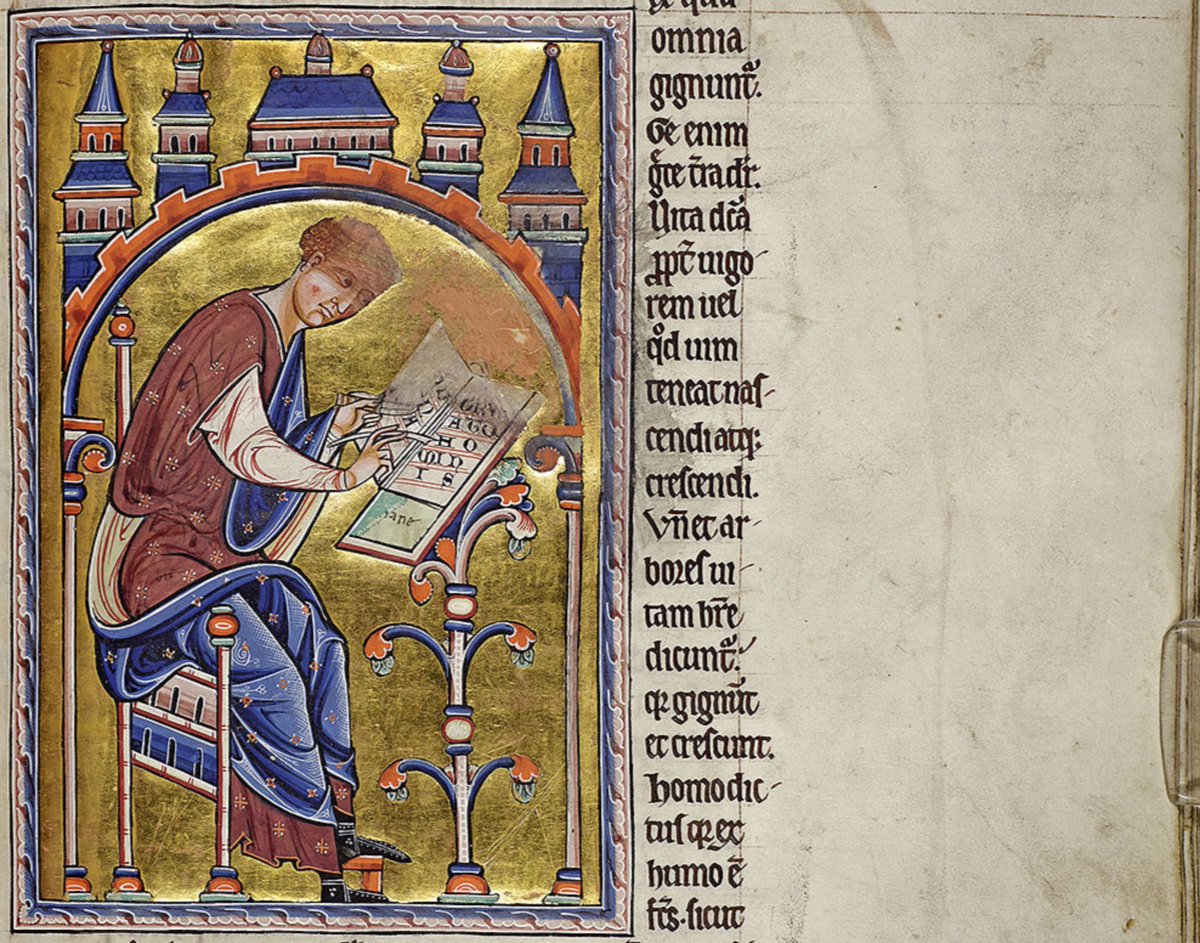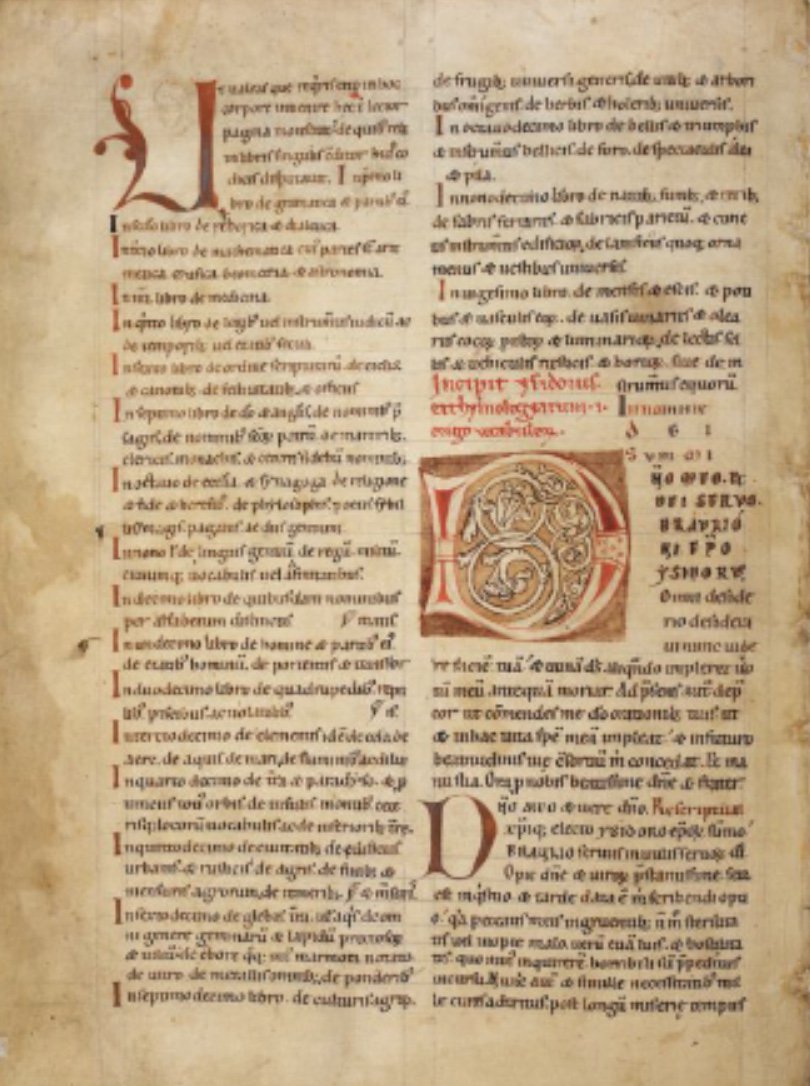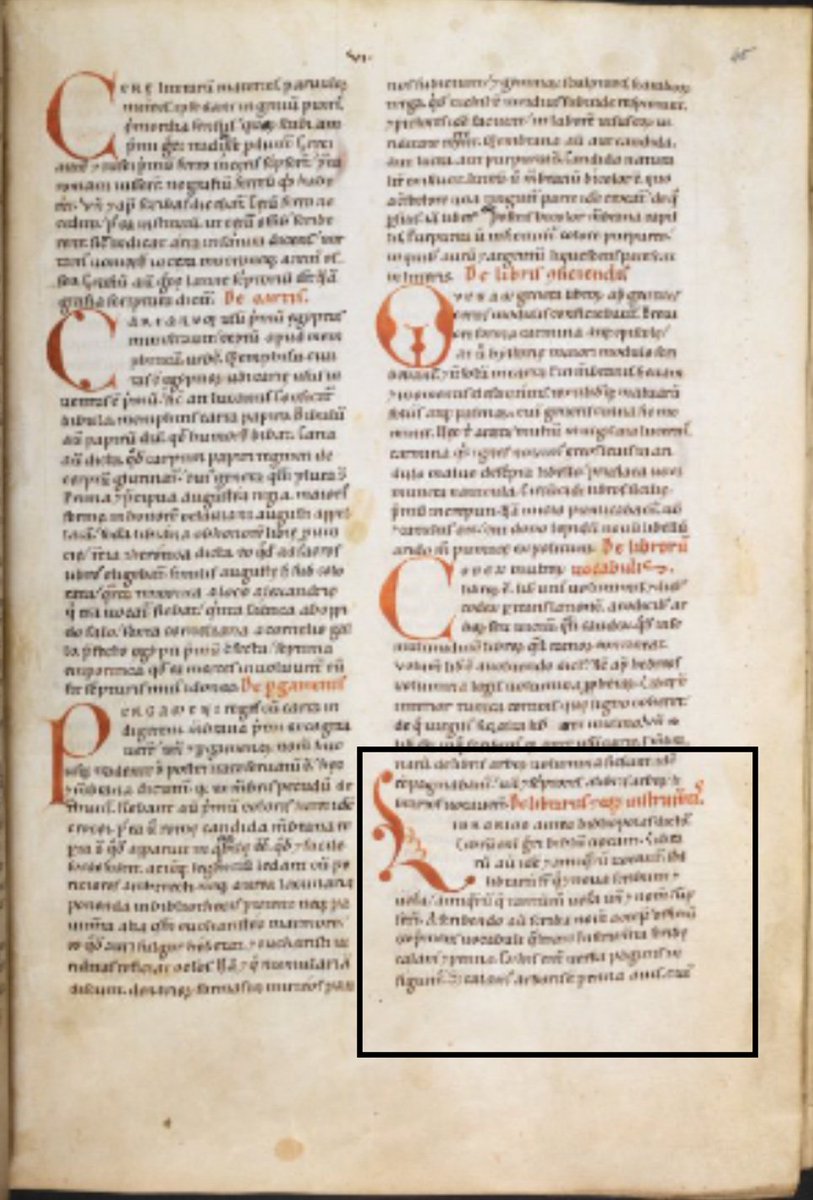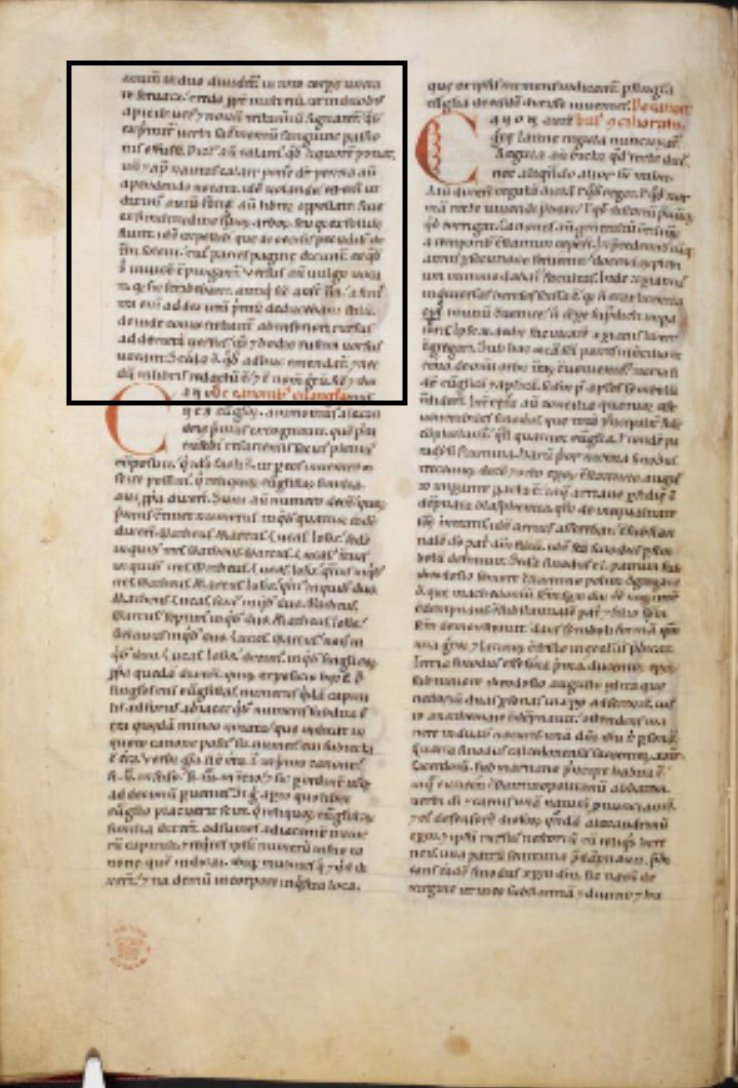
Like everything to do with medieval manuscript production, you have to make or source it yourself - no trips to local art stores for ready-made supplies. So how did they make paintbrushes? Animal hair (as today) was considered the best type of brush 

Theophilus in his twelfth-century treatise, On Diverse Arts, mentions that paintbrushes can be made from the tail of a martin, badger, squirrel, or cat or from the mane of a donkey (bk 2, ch. 17).
Hmmm - I do have plenty of cats ... this is just a small sample
Hmmm - I do have plenty of cats ... this is just a small sample

But Cennini provides more better instructions, recommending that you use vair (squirrel) tails. Vair is another name for the Eurasian red squirrel. Its fur was prized in the Middle Ages and used for lining garments. See here for more fur info: cottesimple.com/articles/fur-p… 

So we shall follow Cennini's instructions. First of all - I will not be using red squirrel fur. I'm using grey squirrel's tails, that have been culled to allow the red squirrel to re-establish in its natural habitat. I ordered some online (which I accept is not very medieval) 

So - here are our ingredients: squirrel tails, scissors, goose feathers, parchment glue, thread, wooden stick and awl 
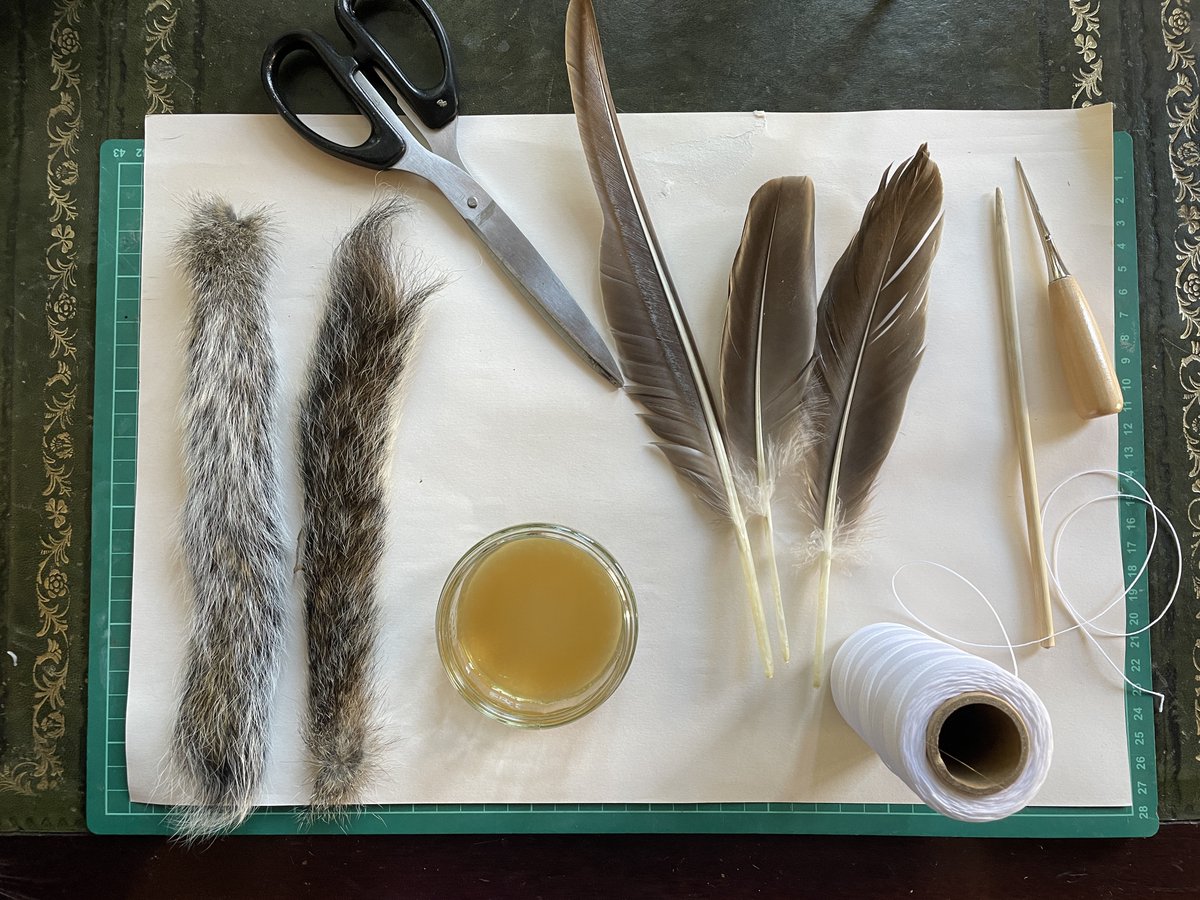
The tails proved extremely exciting for the cats. I turned my back for a minute and one tail had disappeared - found in the jaws of Elijah, who growled at me and would not relinquish his booty 



Once retrieved, he promptly stole it again. Then we had a bit of a tug-of-war, which resulted in him being excluded from the paintbrush making. I considered again using cat tails instead of squirrels. 



Wet the fur to make it easier to handle and tie the cut end with a piece of waxed thread. A third hand would be useful here 



Now you want to take a feather of the same diameter as your chunk of fur. My normal goose feathers that I cut for quills were too large, but I have supply of smaller ones. Cut about an inch/inch and a half and remove the membrane inside (my cats consider this a tasty treat 🤮) 



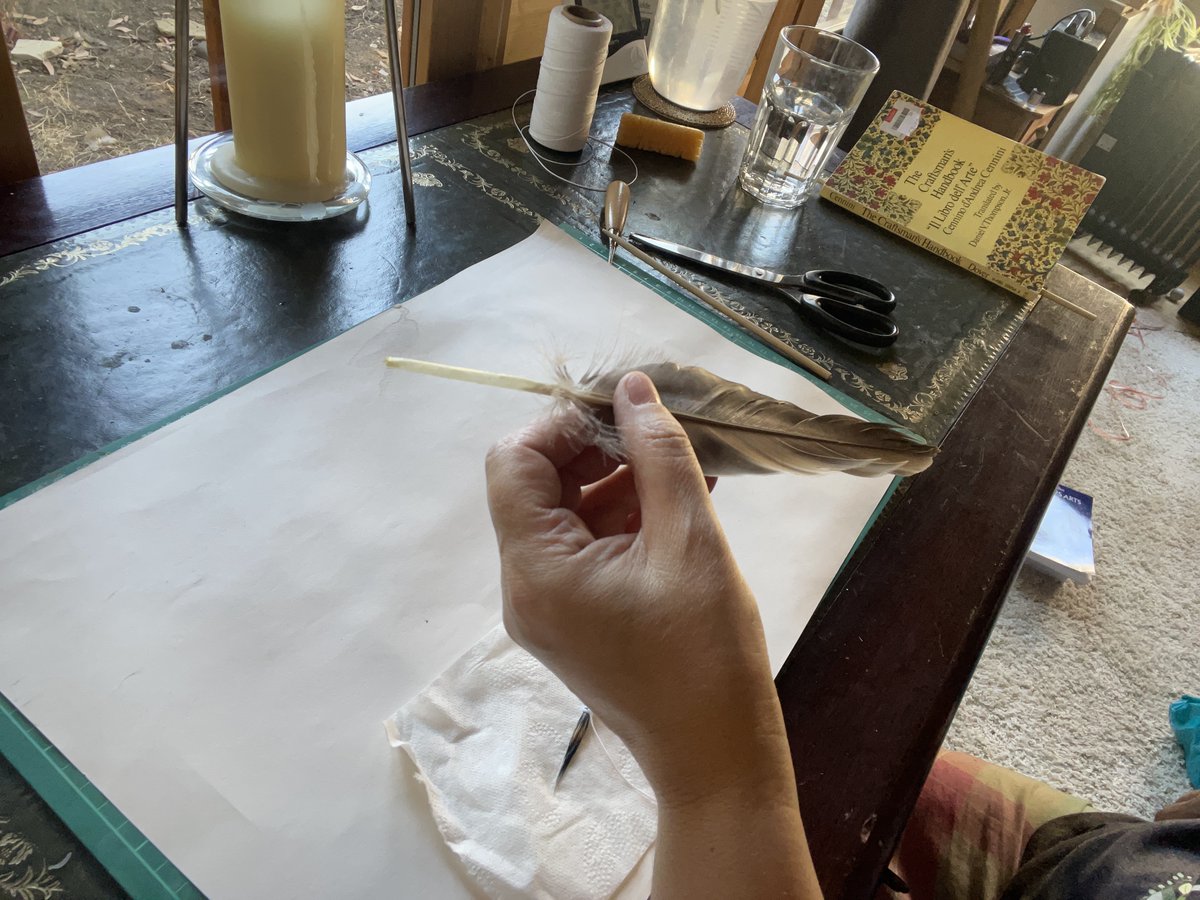


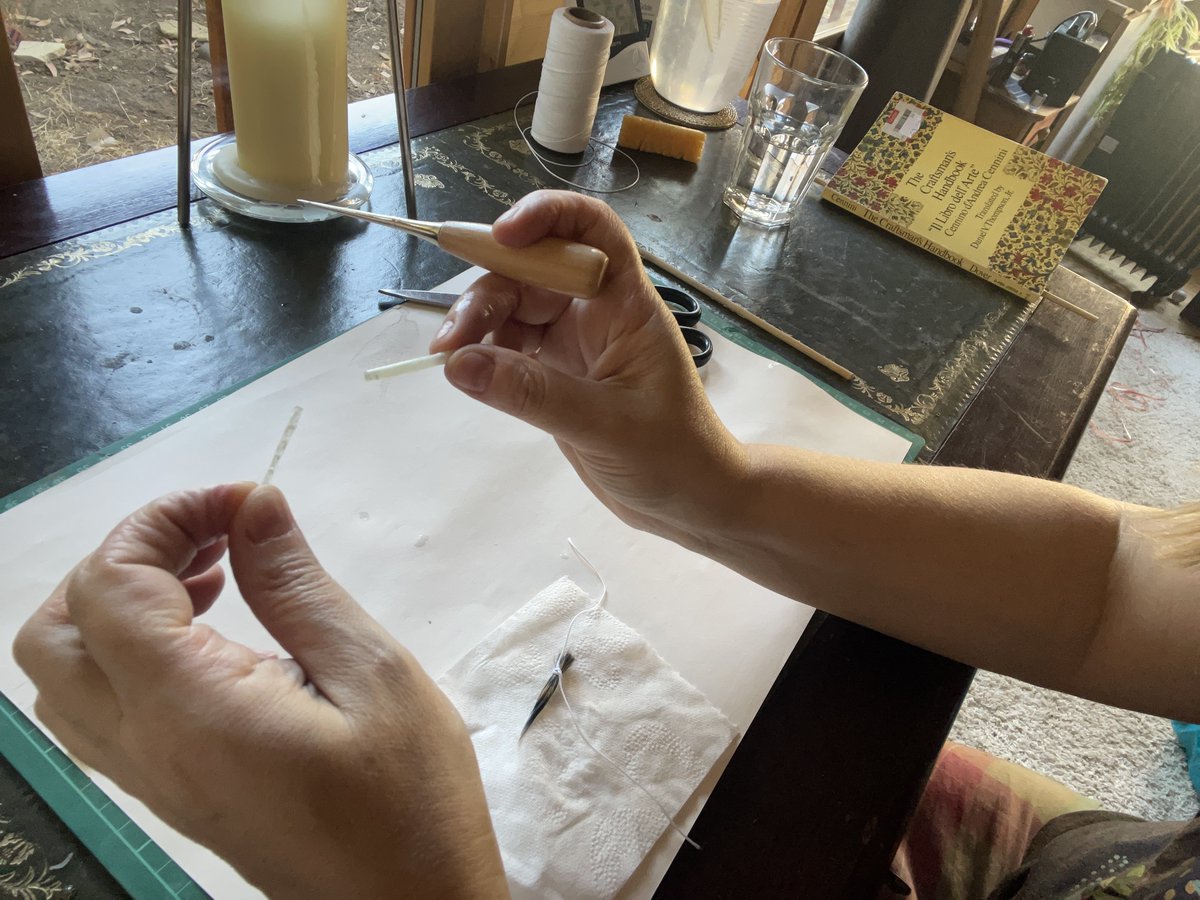
Now, with the wetted fur, feed it through the cut barrel of the feather, using the awl to poke it though. It should be a snug fit. (I actually needed to find a better feather fit than the one I'd originally chosen) 



We're onto the last bit - attaching the wooden handle! Choose a staked wooden stick. I had some gardening ones that proved very useful. Some needed to be whittled further with a knife to fit the barrel 

I reheated some parchment glue. I made the glue by boiling parchment scraps for a few hours and collecting the liquid, which dries to a jelly. A few minutes over a candle reliquidifies the glue 


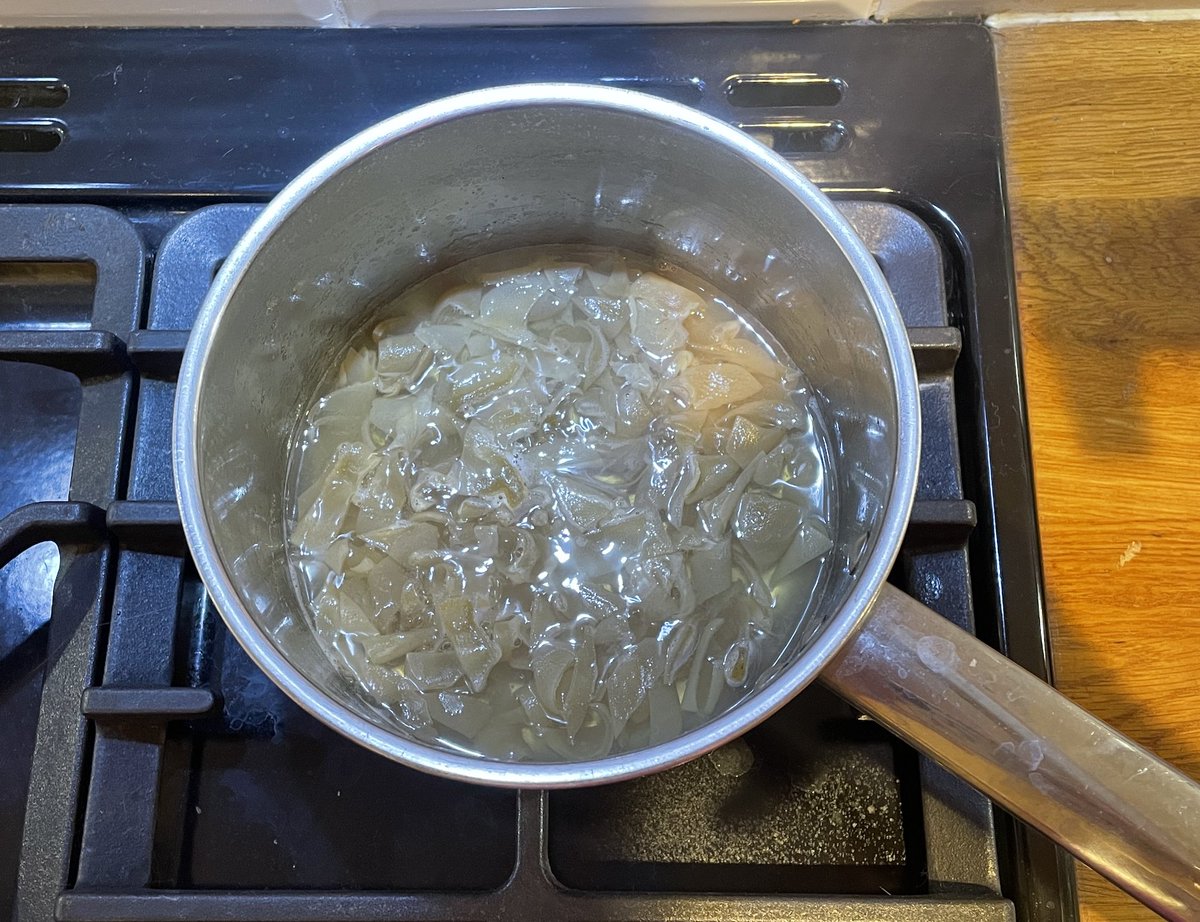


Take your wooden stick and coat the sharpened end in the glue, then press into the other end of the feather barrel 





Hurrah - a paintbrush! This one had a bit of a kink in it, so I made another one (although they both felt lovely to paint with). Then I made some more because I was having such fun 



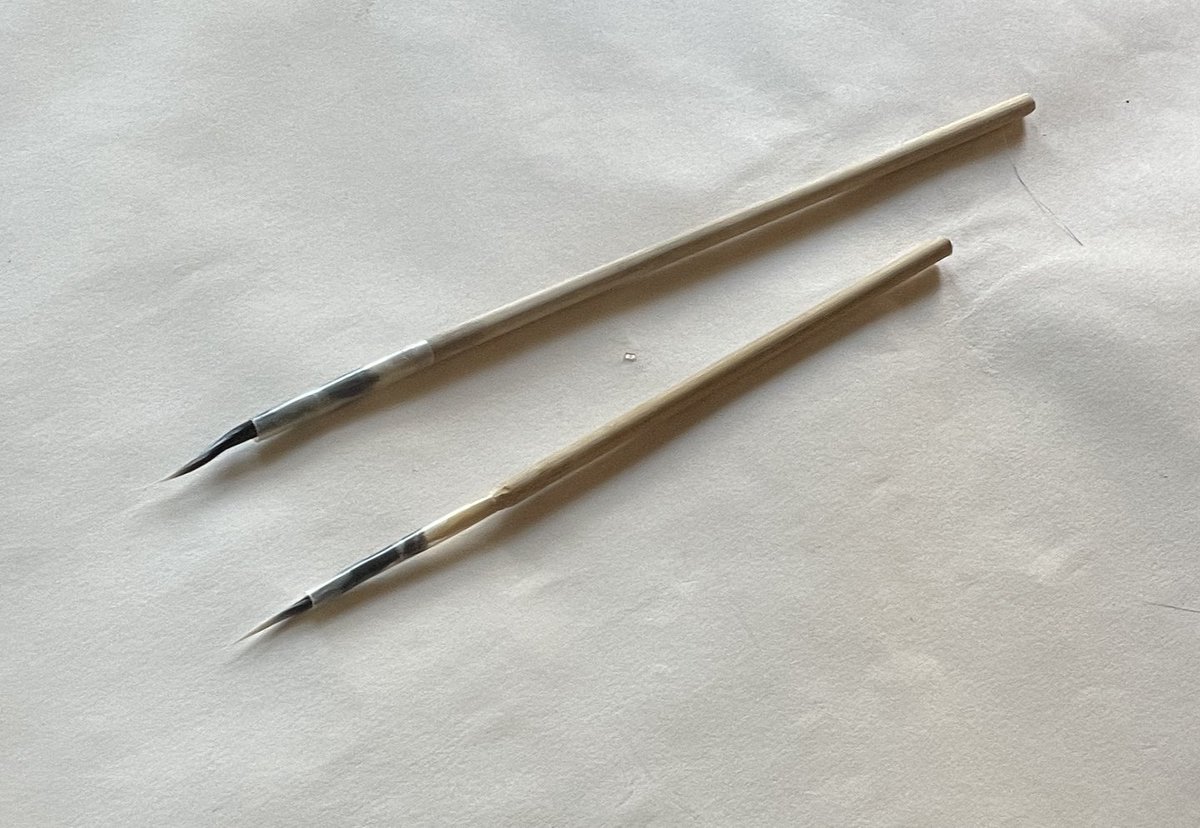

So, I always like to make clear that I'm not an artist or calligrapher or anything skilled. I like doing this stuff to see how its done - not to make the most elegant thing ever. My hands shake too much when I paint, but these brushes allowed me to make really lovely lines 
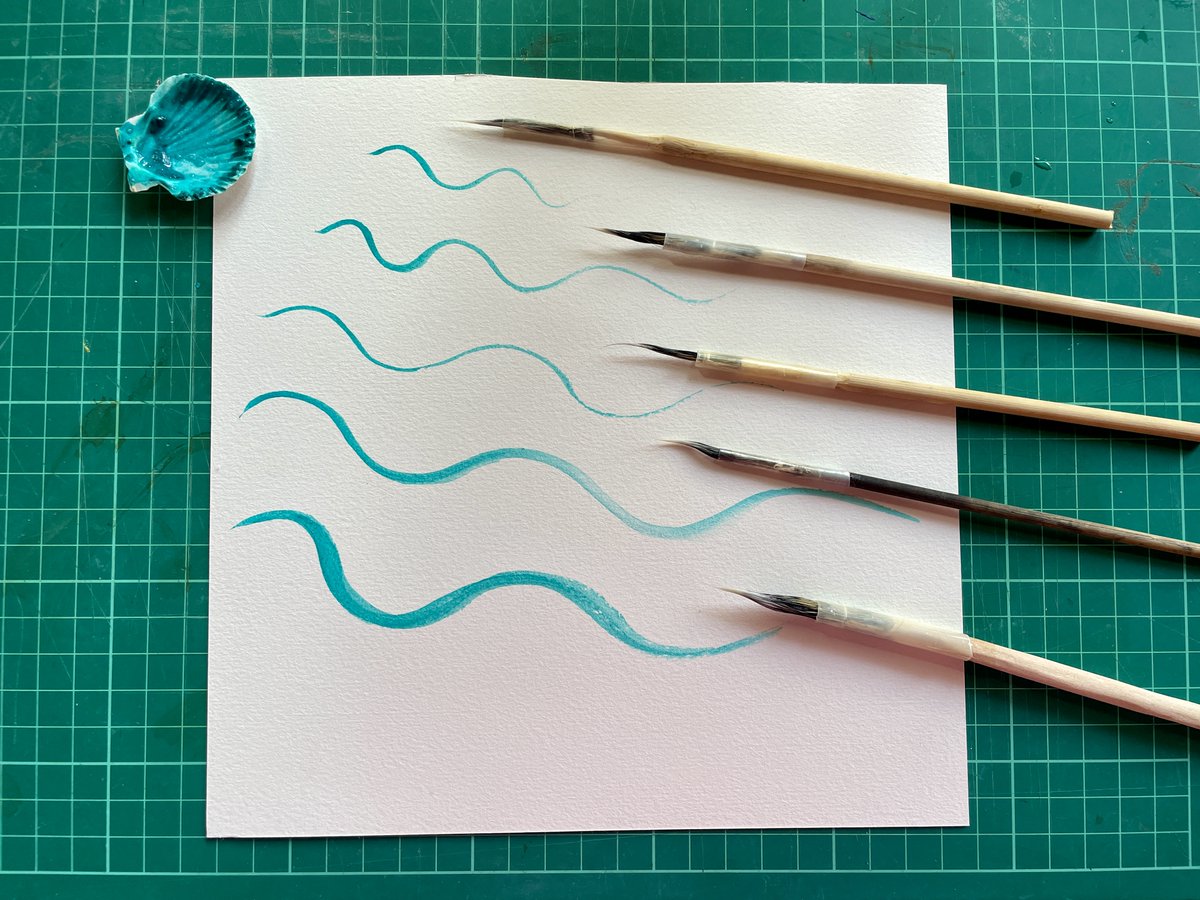
So that was good fun and I've ended up with a usable product! They are now safely stored away from any thieving felines - which begs the question - did medieval painters have the same problem?! #teachingmanuscripts #medievalstuffwithcats 


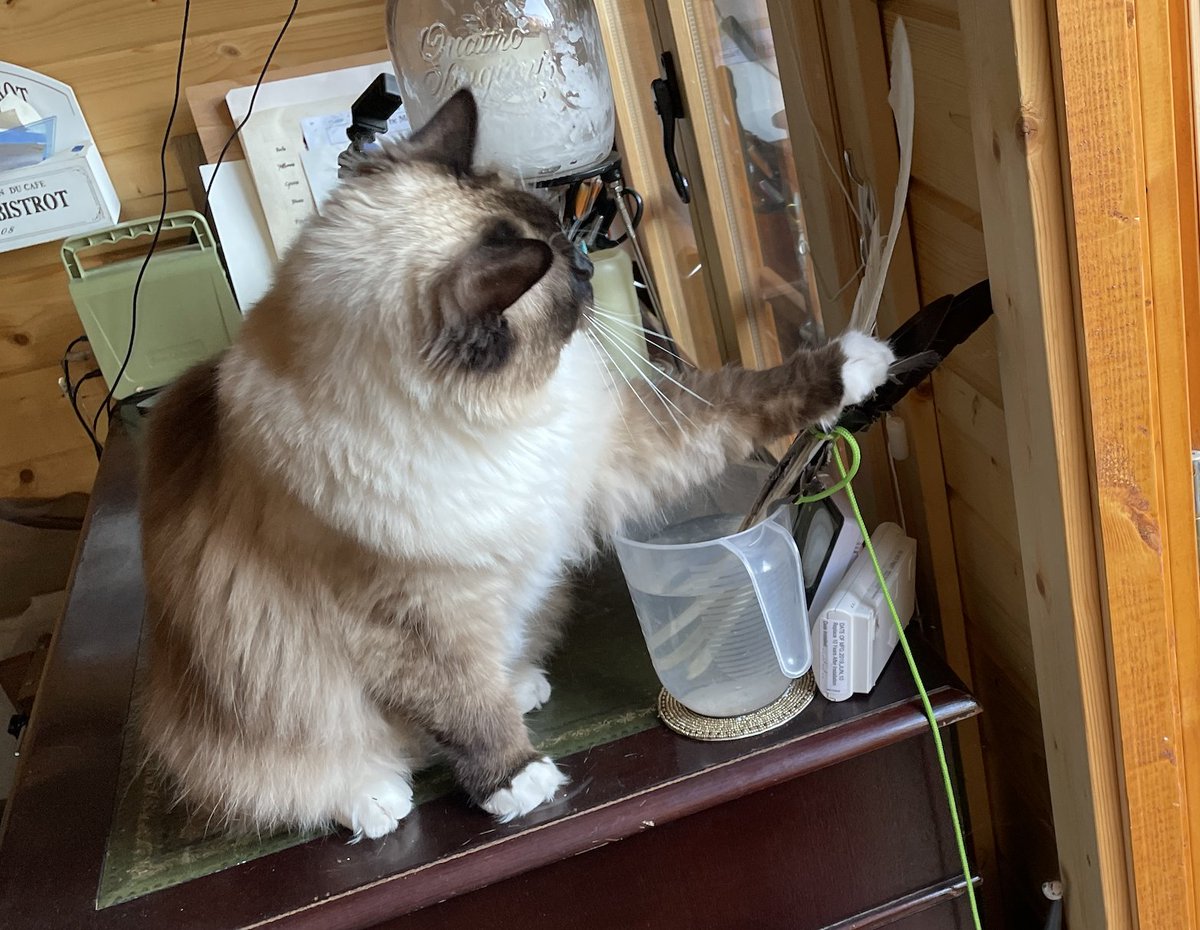
@threadreaderapp unroll
• • •
Missing some Tweet in this thread? You can try to
force a refresh













